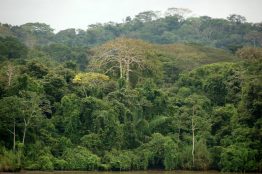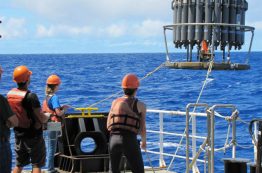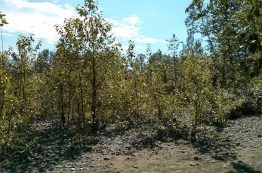How do environmental scientists unearth new discoveries about our planet? Many of us might imagine scientists observing the world around them, wading through tide pools or digging up soil. But what about questions surrounding the origins of life on Earth, or questions about microbes deep, deep within the ocean? Big questions like these require big investments, and the Simons Foundation is supporting University of Washington (UW) researchers to find some of the answers.
Read more »Thicker-leaved tropical plants may flourish under climate change, which could be good news for climate
How plants will fare as carbon dioxide levels continue to rise is a tricky problem and, researchers say, especially vexing in the tropics. Some aspects of plants’ survival may get easier, some parts will get harder, and there will be species winners and losers. The resulting shifts in vegetation will help determine the future direction of climate change. To explore the question, a study led by the University of Washington looked at how tropical forests, which absorb large amounts of carbon dioxide, might adjust as CO2 continues to climb.
Read more at UW News »Is potassium a key to understanding the ocean’s past?
When looking at a periodic table, potassium might not be the first element you’re drawn to – distracted instead by gold, copper or silver. But a new paper published in Science Advances suggests we should be paying more attention to this abundant substance. The study – with first author Yan Hu, a recent graduate student and postdoctoral researcher in the UW Department of Earth and Space Sciences and now at Institut de Physique du Globe de Paris – advances our ability to trace potassium isotopes at high precision, unleashing a suite of potential applications ranging from measuring past climates to further understanding ocean chemistry.
Read more »Marine organisms use previously undiscovered receptors to detect, respond to light
Just as plants and animals on land are keenly attuned to the hours of sunlight in the day, life in the oceans follows the rhythms of the day, the seasons and even the moon. A University of Washington study finds the biological light switches that make this possible. Single-celled organisms in the open ocean use a diverse array of genetic tools to detect light, even in tiny amounts, and respond, according to a study published the week of Feb.
Read more at UW News »Microbes help unlock phosphorus for plant growth
Phosphorus is a necessary nutrient for plants to grow. But when it’s applied to plants as part of a chemical fertilizer, phosphorus can react strongly with minerals in the soil, forming complexes with iron, aluminum and calcium. This locks up the phosphorus, preventing plants from being able to access this crucial nutrient. To overcome this, farmers often apply an excess of chemical fertilizers to agricultural crops, leading to phosphorus buildup in soils.
Read more at UW News »





